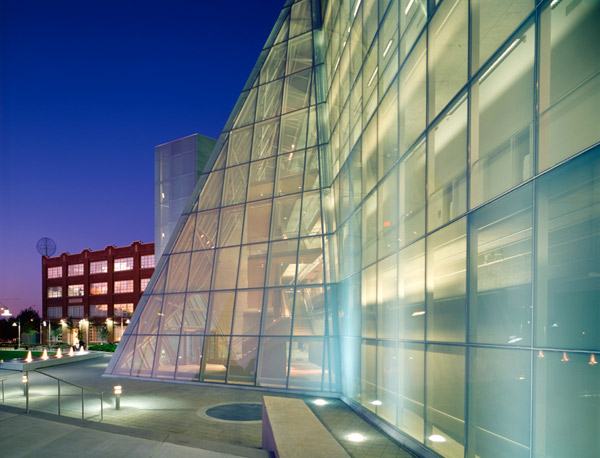New buildings in historic districts don’t have to be bland or drag down the historic and aesthetic character of the area. The Brown Center at the Maryland Institute College of Art offers a striking example of where first-class modern architecture can add a bold new design while bringing out the best in existing historic buildings. Please join us on a tour of the Brown Center to explore this modern architectural landmark and its relation to MICA’s historic campus.
MICA’s Brown Center | 1301 Mt. Royal Avenue, Baltimore, MD 21217
Thursday, February 10, 5:30 PM to 6:30 PM
$10 for members; $20 for non-members
Register today!
Dedicated in October, 2003, the Brown Center at MICA literally and figuratively is designed to reach out to and act as a counterpoint to the college’s historic main building directly across Mt. Royal Avenue. The Brown Center was by designed by architects Ziger Snead LLP and Charles Brickbauer. Mr. Brickbauer is known for other Modernist structures, including BWI Airport, and Ziger Snead has successfully paired new buildings with historic ones, including the Frederick Douglas Isaac Myers Maritime Museum and the new wing of the Maryland Historical Society. The Brown Center houses MICA’s digital arts and design programs, and itself was designed using the same computer-simulated architecture programs that MICA students now learn to use inside of it. The notable form of the building, which is derived from the 62-degree angle formed by the street intersections on the site, has won many architecture accolades, including the Dedalo Minosse Prize in 2006 by the Italian association of professional architects. MICA became nationally known for its creative reuse of historic structures in the 1960s when it redeveloped the Mt. Royal Train Station into studio and classroom space and in the process helped spark a movement to save historic train stations across the country. Please join us and our tour guide, Mr. Michael Molla from MICA, to explore the Brown Center and its role in expanding MICA’s historic campus today.
This tour series is made possible in part by a generous contribution from the Baltimore Office of Promotion and the Arts and the Maryland State Arts Council. Thank you to our sponsors!

